Dibenzocyclo heptene derivatives
| Home | | Medicinal Chemistry |Chapter: Medicinal Chemistry : Antihistamines
Antihistamines - > H1-antagonists with classical structure - > Dibenzocyclo heptene derivatives - > 1. Cyproheptadine (Periacetin) 2. Azatadine - Synthesis and Drug Profile
SYNTHESIS AND DRUG PROFILE
H1-antagonists with classical structure
Dibenzocyclo heptene derivatives
1. Cyproheptadine (Periacetin)
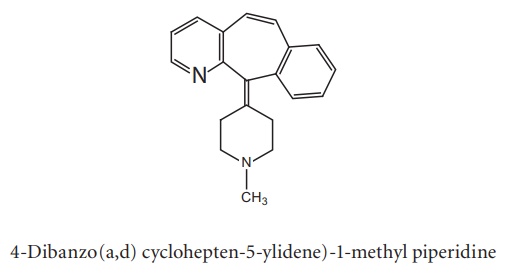
Properties and uses: Cyproheptadine hydrochloride is a white or
slightly yellow crystalline powder, slightly soluble in water and methanol,
sparingly soluble in alcohol. This dibenzocycloheptene may be regarded as a
phenothiazine analogue in which the sulphur atom has been replaced by an
isosteric vinyl group and the ring nitrogen replaced by a sp2 carbon
atom. It also possesses antiserotonin activity and is used as an antipruritic
agent associated with skin disorders (utricaria, allergic dermatitis,
neurodermatitis). It is used to stimulate the appetite in under-weight patients
and those suffering from anorexia nervosa.
Synthesis
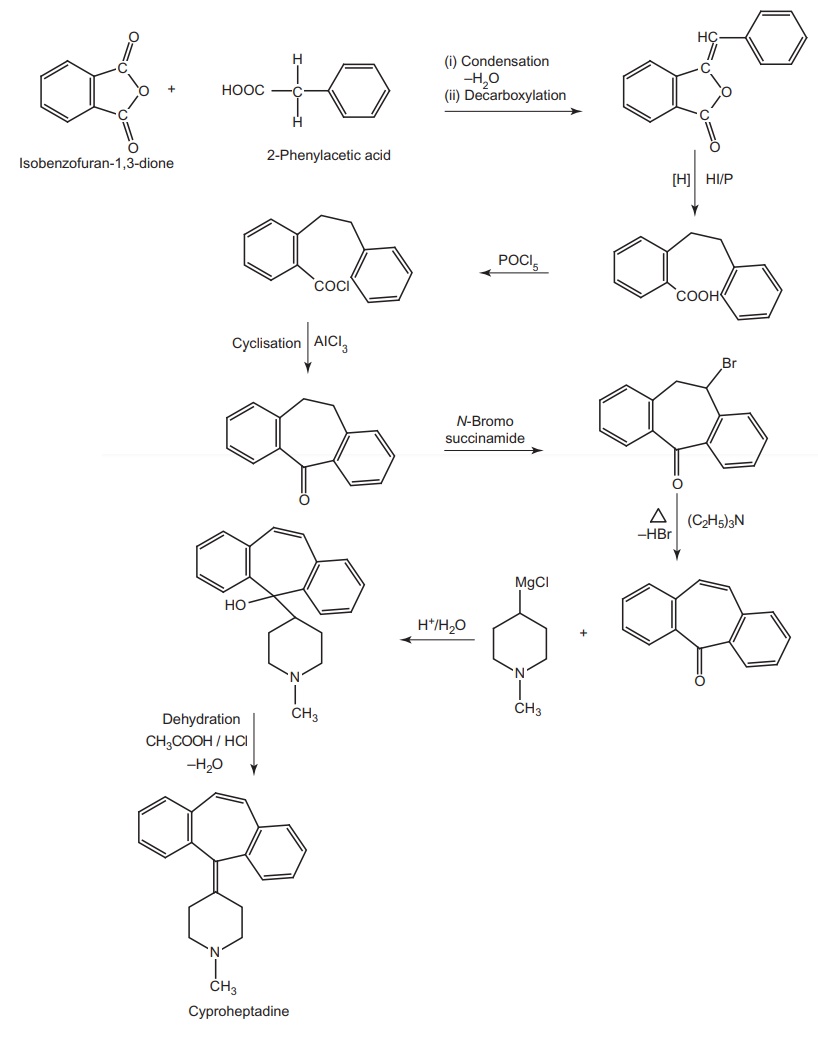
Assay: Dissolve the sample in a mixture of 0.01 M hydrochloric acid and
alcohol and titrate against 0.1 M sodium hydroxide. Determine end point
potentiometrically.
Dose: Usually, the dose is 4 mg taken orally three times a day.
Dosage forms: Cyproheptadine HCl syrup I.P., Cyproheptadine HCl tablets I.P.,
Cyproheptadine tablets B.P.
2. Azatadine
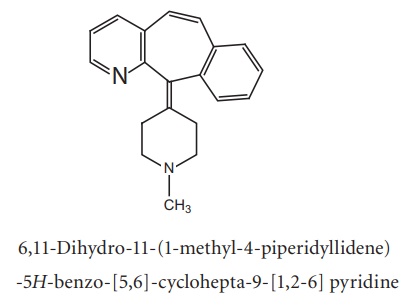
Synthesis
Route I. From: 2-Chloro-3-phenethylpyridine
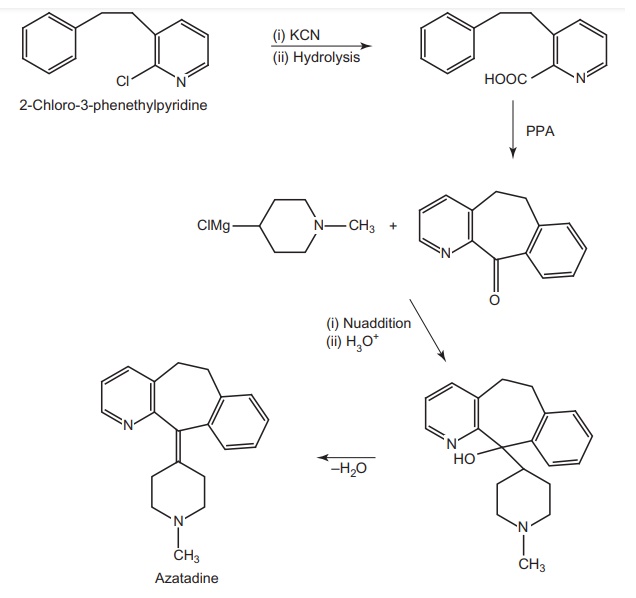
Route II. From: Phenylacetonitrile
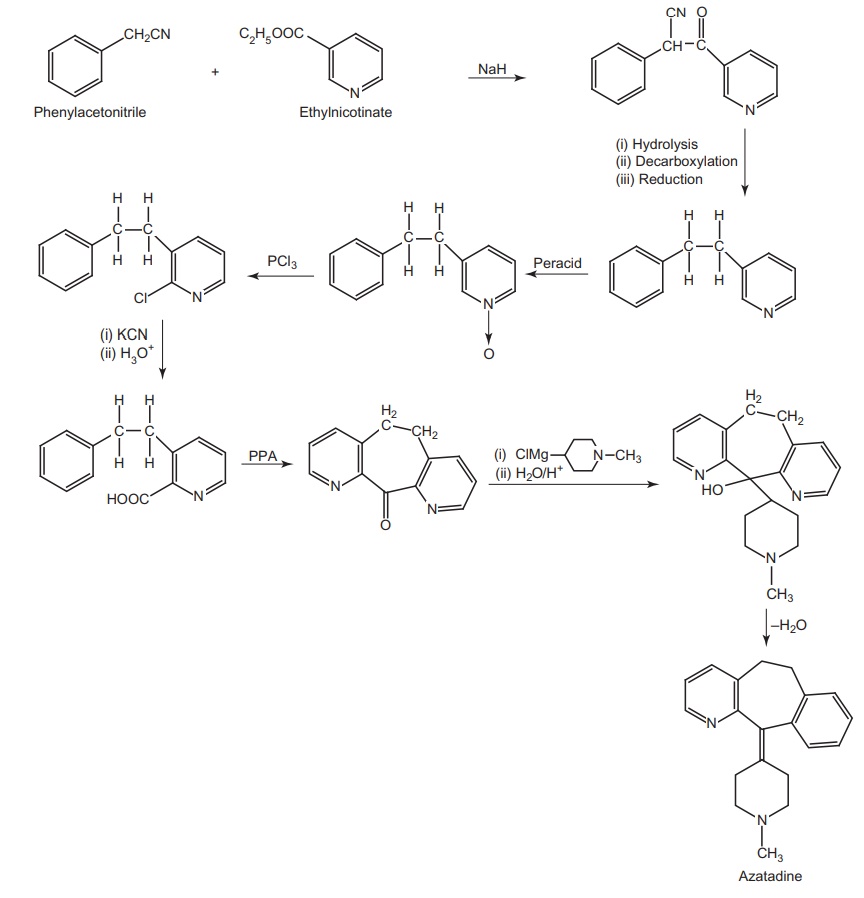
Properties and uses: Azatadine is a potent, long-acting
antihistaminic with antiserotonin activity. In early testing, azatadine
exhibited more than three times the potency of chlorpheniramine in the isolated
guinea pig ileum screening and more than seven times the oral potency of chlorpheniramine
in the protection of guinea pig against a double lethal dose of intravenously
administered histamine.
Azatadine is
an aza isostere of cyproheptadine in which the 10, 11-double bond is reduced.
It has low sedative effect.
Related Topics
